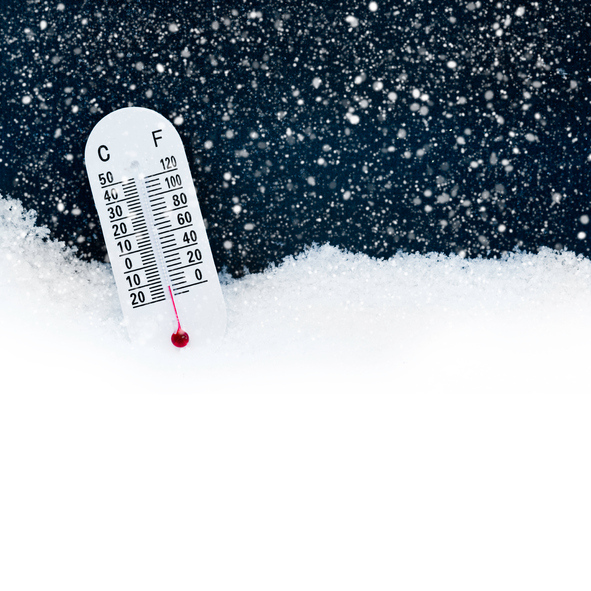Winter can bring with it a host of safety-related issues that need to be addressed in the workplace. Here are some of the costs and consequences of winter-related accidents in the workplace—and also a few easy steps you can take to avoid these winter woes at work.
 |
“Winter-related slips and falls have a significant negative impact on American businesses each year, resulting in time off work, temporary employee costs, overtime for existing employees, and increased insurance costs,” said Mike Britt, president of Accident Fund Insurance Company of America. “To avoid these costs this winter, employers need to be extra vigilant, and employees should exercise extreme caution in the months ahead,” Britt states, adding that in the Midwest states last winter, one-third (29 percent) of workers’ compensation claims resulted from slips and falls.
As temperatures drop and winter hazards increase, the Michigan Department of Licensing and Regulatory Affairs’ Michigan Occupational Safety and Health Administration (MIOSHA) and the Michigan Workers’ Compensation Agency (WCA) are reminding employers and employees to exercise caution when working in the cold and snow.
“Every employer should have an effective safety and health management system in place to protect its most valuable asset: its employees,” said MIOSHA Director Martha Yoder. “As part of this program, they should prepare for winter conditions and provide helpful information to their employees on how to avoid injury and illness.”
“Worker injuries can negatively affect a business’s bottom line, resulting in increased workers’ compensation and insurance costs, overtime, and lost work days for employees,” said WCA Director Kevin Elsenheimer. “By taking the proper safety precautions this winter, job providers can avoid nasty slips and falls that will cost them in the future.”
Lower workers’ comp costs save employers on overhead expenses and give them additional resources to grow their business, hire new workers, and increase their employees’ salaries, says a press release.
Practice these safety tips for winter workplace safety:
- Keep all walkways cleared of ice and snow.
- Have deicing products handy for hard-to-remove ice or snow.
- Make sure all walkways and passageways are clearly marked and well-lighted.
- Clearly mark or barricade hazardous areas.
- Be careful of slippery surfaces inside buildings.
In addition to the above practices, train your employees to take these safety precautions:
- Wear slip-resistant footwear.
- Practice safe walking on slippery surfaces by taking slow, small steps.
- Avoid carrying heavy loads that may offset your balance.
- Wear sunglasses on sunny days to lessen winter glare.
- Take extra precaution when entering and exiting vehicles.
- Know the symptoms of frostbite and the first-aid steps to address it.
It’s Slippery Out There!
Slipping and sliding means accidents and injuries. Unless they’re ice skating or skiing, you don’t want your employees to be slipping and sliding, especially around your workplace.
Yet, weather-related slips and falls become a serious hazard because winter conditions often make for wet or icy surfaces outdoors. Even wet leaves or mud can create treacherous walking conditions. Spills and leaks inside can also lead to slips and falls.
You want to do everything you can to prevent these accidents—outside and in. Perhaps the best way to go about it is with awareness training. Short safety meetings in every department for all employees should get people thinking about slipping hazards and taking precautions to prevent falls.
Here’s how to create a slip-free zone inside and out.
Inside
- Instruct employees to clean up spills, drips, and leaks immediately. (Even a little coffee spill on the floor can cause a slip, a fall, and an injury.)
- Make sure maintenance personnel and other employees put up signs or barriers to warn people when floors are wet, slippery, or otherwise hazardous.
- Assign somebody to put down mats on wet days near entryways to help keep floors dry.
Outside
- Sand or salt slippery spots immediately.
- Urge employees to wear sensible shoes with nonskid soles on bad weather days.
- Instruct employees to wipe their feet when they come in from outside.
- Teach employees to walk slowly, take small steps, and slide their feet on wet or slippery surfaces.
Inside and Outside
Encourage employees to report slippery conditions.
- Emphasize the need to fix or report hazardous conditions anywhere inside or outside your facility.
- Instruct employees how, and to whom, to report any slipping hazards they can’t clean up effectively inside.
- Make it easy for them to report any slipping hazards they notice outside on walkways, in parking lots, or anywhere else on your property. That way maintenance can get to the scene quickly and remove the hazard before an employee or visitor to your facility slips and falls.
Remind employees to be extra careful in winter weather.
- E-mail or text reminders or safety tips.
- Place winter safety posters in break rooms and other gathering areas.
- Include winter safety training tips in company newsletters during winter months.
Don’t forget that if an employee is injured by a slip and fall, it could mean lost workdays, workers’ compensation, and other medical expenses. If a visitor is injured by a slip and fall outside or inside of your facility, it could mean an expensive lawsuit.
